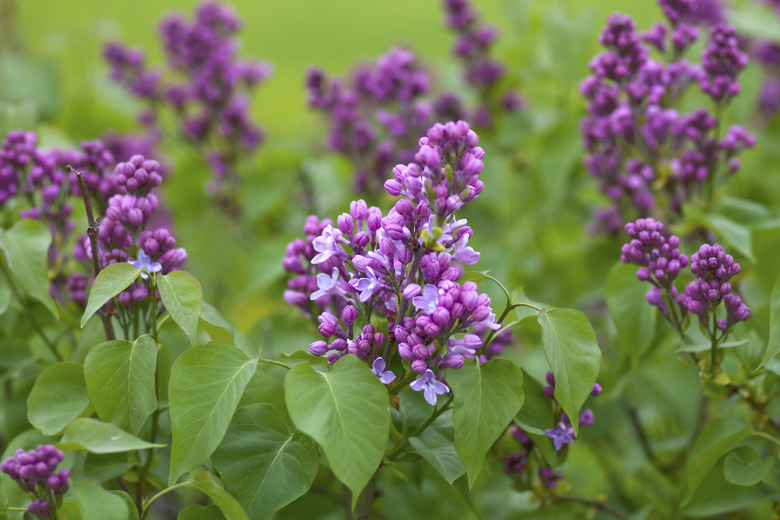Can You Graft A Lilac Tree?
When a plant has multiple merits, horticulturists have their propagating work cut out for them to meet the demands of gardeners who want more for their yards. With its butterfly and hummingbird appeal and showy, fragrant flowers, the enduring lilac (Syringa spp.) is such a plant. Although grafting lilac is a viable propagating method, it may not be the best choice for long-term plant health.
Lilac Species and Hardiness
To perform at its peak, lilac typically needs to chill out. Low temperatures and some frosty winter nights enhance the blooms that plants bear the next spring. Depending on the species and cultivar, most lilacs grow as perennials in U.S. Department of Agriculture plant hardiness zones 4 through 7, including French lilac (Syringa vulgaris), although some species such as early lilac (Syringa oblata) survive the colder temperatures in USDA zone 3. Some "low chill" cultivars, such as "Lavender Lady" and "Blue Boy," extend lilac's hardiness range to the warmer USDA zone 8 because they don't need as much cold weather to flower well.
- When a plant has multiple merits, horticulturists have their propagating work cut out for them to meet the demands of gardeners who want more for their yards.
- Some "low chill" cultivars, such as "Lavender Lady" and "Blue Boy," extend lilac's hardiness range to the warmer USDA zone 8 because they don't need as much cold weather to flower well.
Grafting Goal
Plants are typically grafted to combine the best properties of two or more plants, such as the top growth — called a scion — of a profuse flowering variety that's grafted onto the rootstock — called the stock or understock — of a hardier plant. Sometimes, plants of different genera and species can be grafted together, as long as they are members of the same plant family. Regardless of the types of plants grafted or the types of grafts used, the goal is the same: Producing a plant that has increased vigor, disease resistance and improved flowering or fruiting capability.
Grafting Lilac
Lilac is a member of the Oleaceae plant family, so it can be successfully grafted onto the rootstock of some other family members, such as privet (Ligustrum ovalifolium), a perennial in USDA zones 5 through 8, and green ash (Fraxinus pennsylvanica), a perennial in USDA zones 3 through 9. But grafting is not a suitable long-term propagating solution for lilac. It is a difficult procedure if you're not a trained expert and the graft union has a high rate of failure, which results in a dead plant.
Asking Questions
Ungrafted lilacs that grow on their own roots are better choices for your garden than grafted plants or those propagated from seed. Although grafted lilacs grow quickly when they're young, which makes them look impressive in their pots at garden centers, the plants typically decline as they mature. Sometimes, a graft union appears to be successfully joined, but over time it can split apart — called delayed incompatibility — which kills the plant. The problems won't surface until after you've brought a lilac home, planted it and nurtured it for several years. So before you buy, ask questions about how a lilac was propagated. Choose an ungrafted plant that has its own roots, propagated from cuttings, layering or tissue culture, also called micropropagation.
- Plants are typically grafted to combine the best properties of two or more plants, such as the top growth — called a scion — of a profuse flowering variety that's grafted onto the rootstock — called the stock or understock — of a hardier plant.
- Regardless of the types of plants grafted or the types of grafts used, the goal is the same: Producing a plant that has increased vigor, disease resistance and improved flowering or fruiting capability.
References
- Floridata: Syringa Vulgaris
- Missouri Botanical Garden: Syringa Oblata
- University of Nebraska-Lincoln Extension: Lilacs
- Cornell University Department of Horticulture: Grafting and Budding
- Missouri Botanical Garden: Ligustrum Ovalifolium
- Missouri Botanical Garden: Fraxinus Pennsylvanica
- Montana State University Extension: Growing Lilacs in Montana
